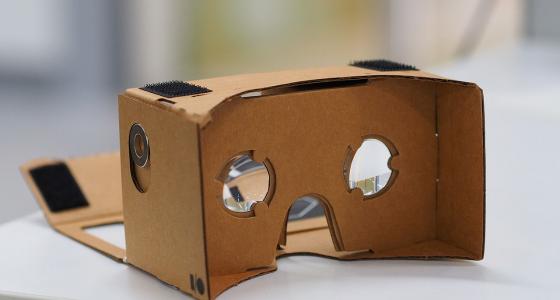On a crisp morning last autumn, an old media behemoth provided an enormous boost for a next-generation medium – virtual reality. On November 5, 2015, The New York Times delivered 1.2 million Google Cardboard VR viewers to subscriber doorsteps, breaking a huge barrier. All users had to do was add their smartphone, and they were able to participate in this new experience.
When VR came roaring back into public consciousness several years ago with early demos of headsets such as the Oculus Rift, it was perceived as primarily a gadget for gamers. Now Google, The New York Times and others have helped to change that, and consumers are gravitating towards the more accessible options. If a VR experience can be constructed from a smartphone and a cardboard box, almost anyone can make one.
Tech leaders continue to make VR more accessible to a wider audience. In fact, Samsung is currently offering customers a free Galaxy Gear VR headset and game bundle with the purchase of a new Galaxy S7 or S7 Edge smartphone.
The next move is up to the content producers. Since almost anyone can get a viewer or dock, and many people already have a smartphone, it’s up to VR creators to provide the “why” for this technology.
The low cost barrier means VR could revolutionize all kinds of fields, including education, news and entertainment. Google, for example, is already taking kids around the world on virtual field trips using Cardboard, enabling kids in San Francisco to tour a mangrove forest or swim with great white sharks.
The 2016 NAB Show in Las Vegas in April features enough programs focused on VR production and content creation that it is an essential destination for anyone interested in this rapidly evolving field. Some sessions, like “Live Streaming Virtual Reality,” “Post-Produced Virtual Reality” and “The Current State of Virtual Reality” bring industry insiders, innovators and academics together to discuss the latest trends. These include market projections and recent hardware and software developments as well as some perspective on the business opportunities for content creators.
The NAB Show even includes a Virtual & Augmented Reality Pavilion, where you can see how the world as we know it is going through enormous shifts. You can get your hands on the latest augmented and virtual reality equipment and software. You’ll also learn how the new medium is impacting all aspects of filmmaking, storytelling, cameras, lighting, sound, production, special effects (VFX), editing, distribution, coding and consumption.
For the more cinematic-minded, the Kaleidoscope VR Showcase will feature groundbreaking virtual reality films and immersive experiences hailing from North America, Europe, South America and beyond. Kaleidoscope is a visionary studio empowering independent VR artists around the globe. For the first time in the show’s history, NAB Show attendees will have the opportunity to travel to virtual worlds and experience the most innovative narrative, environmental and interactive content.
“With the rapid evolution of media and entertainment, it’s clear that virtual reality will play a prominent role in the future of film and broadcasting,” Chris Brown, NAB Executive Vice President of Conventions and Business Operations, said in a statement. “Kaleidoscope will be a major highlight of our virtual reality educational programming – we can’t wait to see what this next generation of artists brings to the NAB Show floor.”
Other programs will dive into specific use cases, including the sessions “Being There – Virtual Reality News and Documentaries” and “Building Worlds – Cinematic Storytelling in VR and AR.” Augmented reality, which is more focused on adding value to the real world via headsets than creating a completely immersed experience, will also be discussed in-depth at the “Augmented Reality: The Merger of Content and Interaction” session.
VR was undeniably gimmicky when it first captured the public’s imagination in the 1980s, and it remained pretty gimmicky when it resurfaced in the late 2000s. But with the lower barrier for entry and almost no limit to its uses, VR is now one of the most exciting tech breakthroughs in recent years, opening up new opportunities every day for the latest generation of content creators.
Virtual and augmented reality may be the future, but NAB Show can prepare you for it now. Learn how you can become a producer of this amazing content by checking out the NAB Show April 16 to 21 in Las Vegas.
Thought Gallery Channel:
Thought Leaders
